
A child sexually abused by another kindergarten schoolmate. A young girl that didn’t go to school because of depression and suicidal thoughts. A four-year-old boy who was looking at porn on his parents cell phone.
These are just three of the multiple cases that a clinic in Carrillo sees everyday.
Seven years ago, this clinic opened to provide medical and psychological free care for the most vulnerable population in the canton: boys, girls and adolescents.
In Guanacaste there are only 10 psychology professionals for the public health centers, according to the regional health services director Warner Picado. That’s 10 specialists for more than 380,000 people that live in the province when the World Health Organization (WHO) recommends 38. One per 10,000 residents. None of the 10 professionals specializes in children and private psychologists are too expensive for many.
I can’t afford a private one,” says Damaris Sánchez, mother of two girls who are patients of the clinic. Her case isn’t an isolated one. According to officials, the majority of families the clinic sees come from impoverished neighborhoods.
Doctor Chavarría says that “they are people with economic vulnerability, but it’s also a population that doesn’t defend itself and depends on their mom, dad and other people.”
The numbers of the first half of 2018 have alarmed officials. Patients are presenting signs of self-mutilation, premature sexuality and sexual abuse.
This specialist is one of the doctors that works at Creciendo Juntos, a small medical center with a waiting room and two offices. In one of the offices, Doctor Mariam Méndez does general medical checkups and in the other, Chavarría offers psychological care.
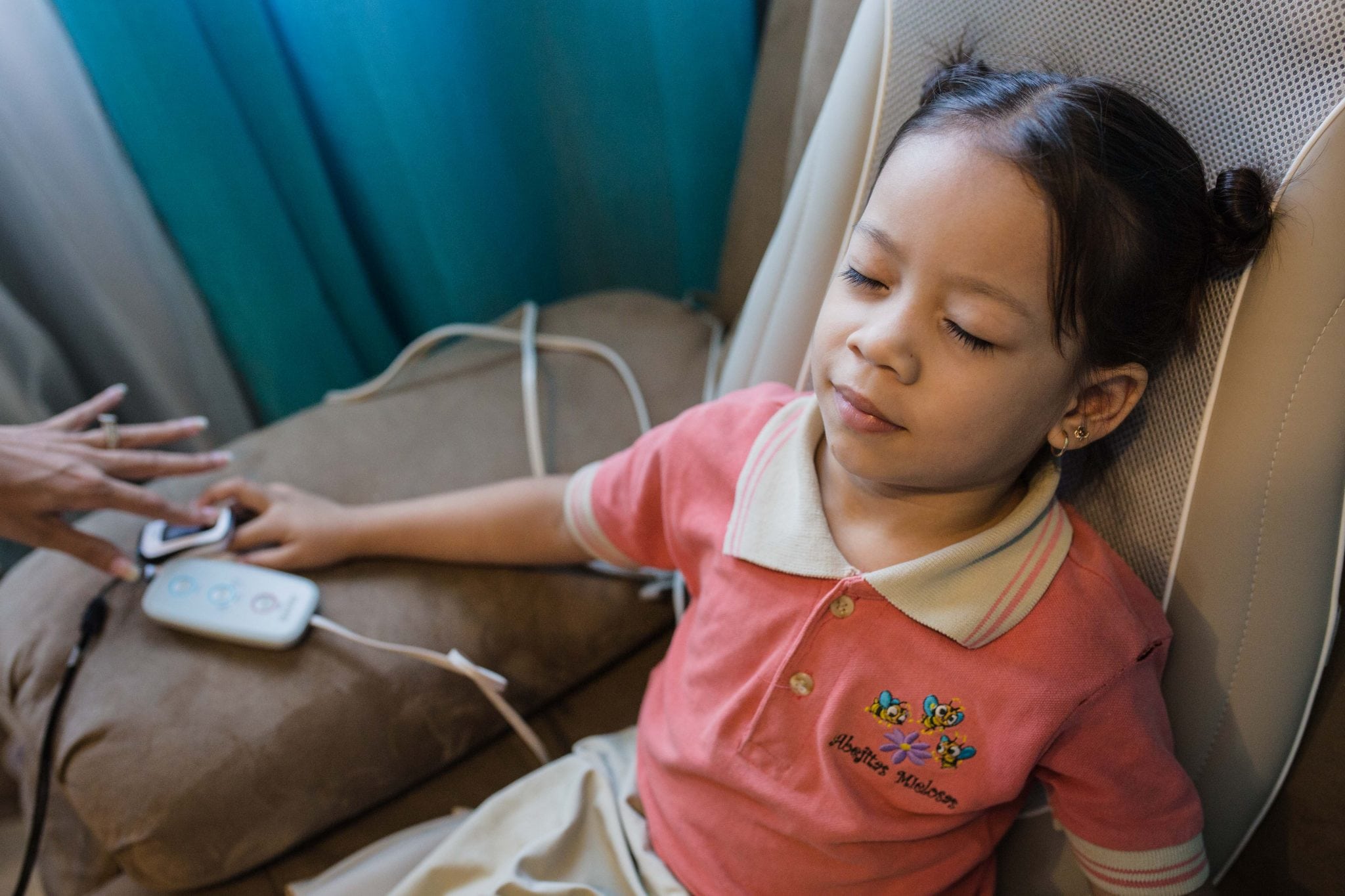
The psychologist uses biofeedback instruments in order to measure the cardiac rythm of the children and help them get over their fears. Recently the clinic has detected trauma cases fue to flooding in the communities of Carrillo. Photo César Arroyo.
The clinic encourages families from the canton to attend a doctor in order to prevent illnesses, and not only when they have symptoms.
“The ‘healthy child checkup’ is a periodic checkup during child’s first year,” Méndez said. “In general, mothers usually don’t take their child to the doctor’s office after that, only when they come down with something or they take them to the emergency room. Here, we encourage families to come every three or four months. That way we can detect pathologies.”
The greatest concern for the doctors is what would happen if the clinic didn’t exist. Who would provide the same care for the children that they provide?
Alliances, a Recipe for Success
The clinic belongs to the Creciendo Juntos association, a community organization that was born in 2001 as a social responsibility program at the touristic Ecodesarrollo Papagayo Company in order to support schools and communities around them. The association has an alliance with the Public Education Ministry.
In 2013, the association became a non-profit organization. Its independence stemmed from the need to seek out other ways to finance projects that became fewer and fewer after the 2008 recession in the United States that forced Ecodesarrollo to cut its budget for the association.
“It was never a thought to close Creciendo Juntos, but they did reduce our budget,” says Elsa Bonilla, the association’s director.
The non-profit model allows them to receive donations from organizations, companies and individuals. Papagayo is still its main investor, but they also receive funds from foundations like Crusa and Amigos de Guanacaste.
In 2011, the association joined international non-governmental organization Children Without Borders to found the clinic that, today, provides care for girls like Damaris Sánchez.
The Creciendo Juntos health center solved two problems in the community. There was only one Costa Rica Social Security Institute doctor’s office in the canton that opened once a month, so the clinic wasn’t fully taken advantage of. Secondly, the majority of schools that support the association don’t have psychologists or counselors for students.
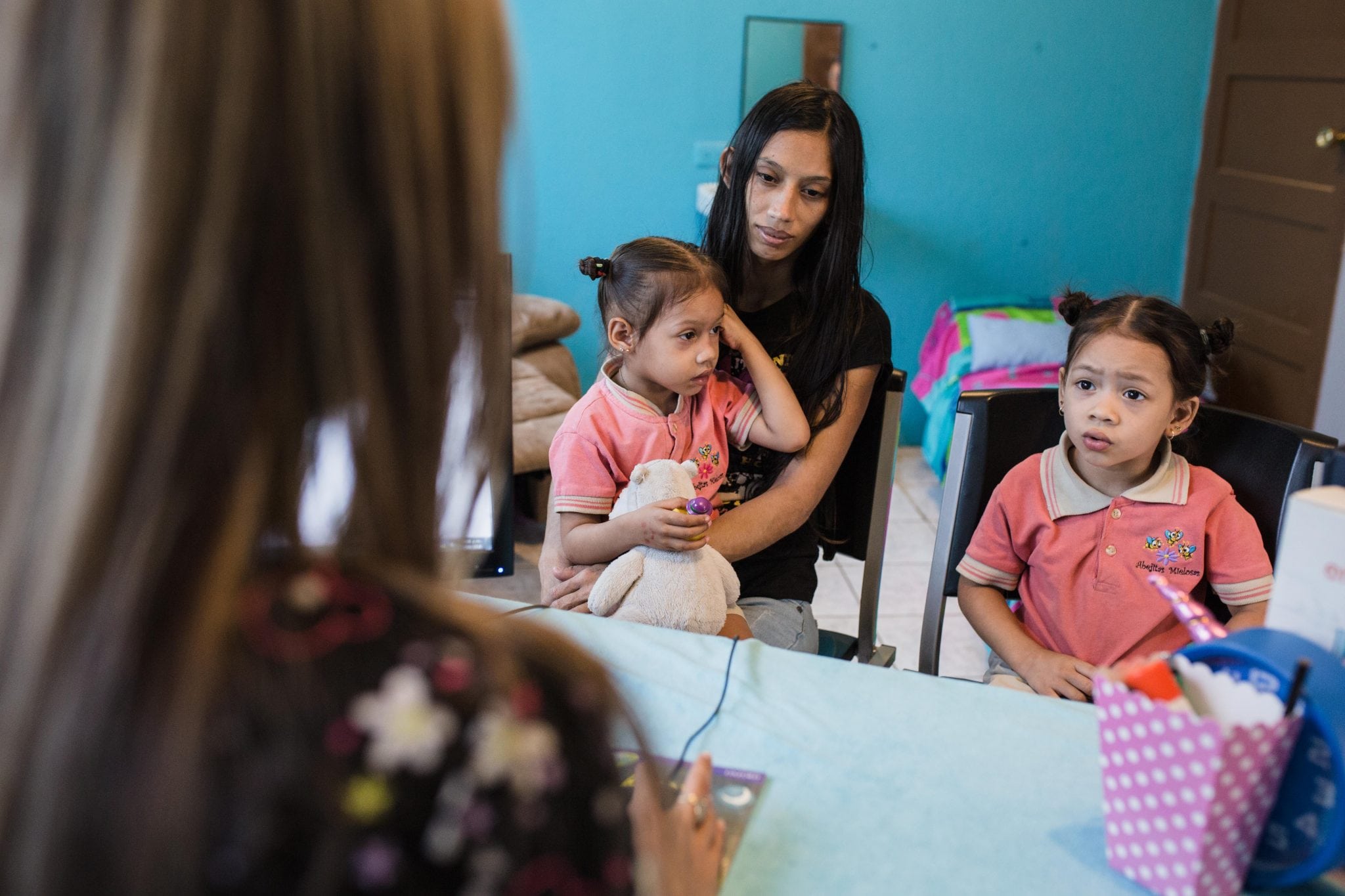
On a September morning, Damaris Sánchez brought her daughters Yousehlin (left) and Yausing (right) to a psychology appointment. They both received therapy to deal with the death of a loved one. Photo César Arroyo.
Through this alliance, the social security institute provides the infrastructure, medicine, laboratory work and a place where doctors can refer patients to other specialists in the public health sector. The association assumes the operation costs of the clinic from paying services to the doctors’ salaries.
On many occasions, it’s the teachers and principals that detect behaviours in the students and they refer them to Creciendo Juntos.
The task isn’t easy. According to Bonilla, the constant challenge is collecting all the money they need to keep the association going. The clinic, for example, costs $40,000.
It hasn’t been easy for the clinic to meet its goals. In 2015, Children Without borders ended its alliance with the association and it became difficult to assume all the costs on their own. The clinic had to close for three months and open later without psychological care.
We almost all died of fear,” said Bonilla. “We closed the clinic for three months until a man who was staying at the Four Seasons Hotel told us that he would give us money for six months,” she said, adding that they are up and running normally again.
There is no Line Here
The two stools in the waiting room are almost always empty. Appointments are scheduled so that the service doesn’t get overwhelmed. A flyer on one of the walls warns that all appointments will be rescheduled if you show up 10 minutes late.
A woman who is sitting on one of the stools says that is what makes this place special. “When you come, you don’t have to wait in line,” she says.
This has made the majority of patients show up on time and helped people feel happy with the care they received. It also helps doctors keep up with the number of people they have to see each day.
They see around 3,000 patients every six months, among them newborns and 18-year-old teenagers. They keep statistics on the diagnoses they make. Conditions like being overweight and lung infections are the most common in general medicine. In psychology, it’s anxiety, bullying and abandonment by family members.
Performing this analysis helps them understand the issues they must take into consideration for brochures and for presentations they do once a month in schools. The upcoming ones will deal with sexuality and suicide, the cases that have them most alarmed.
*This article was edited on October 13 to hide the personal story of one of the patients, as a petition of Creciendo Juntos.



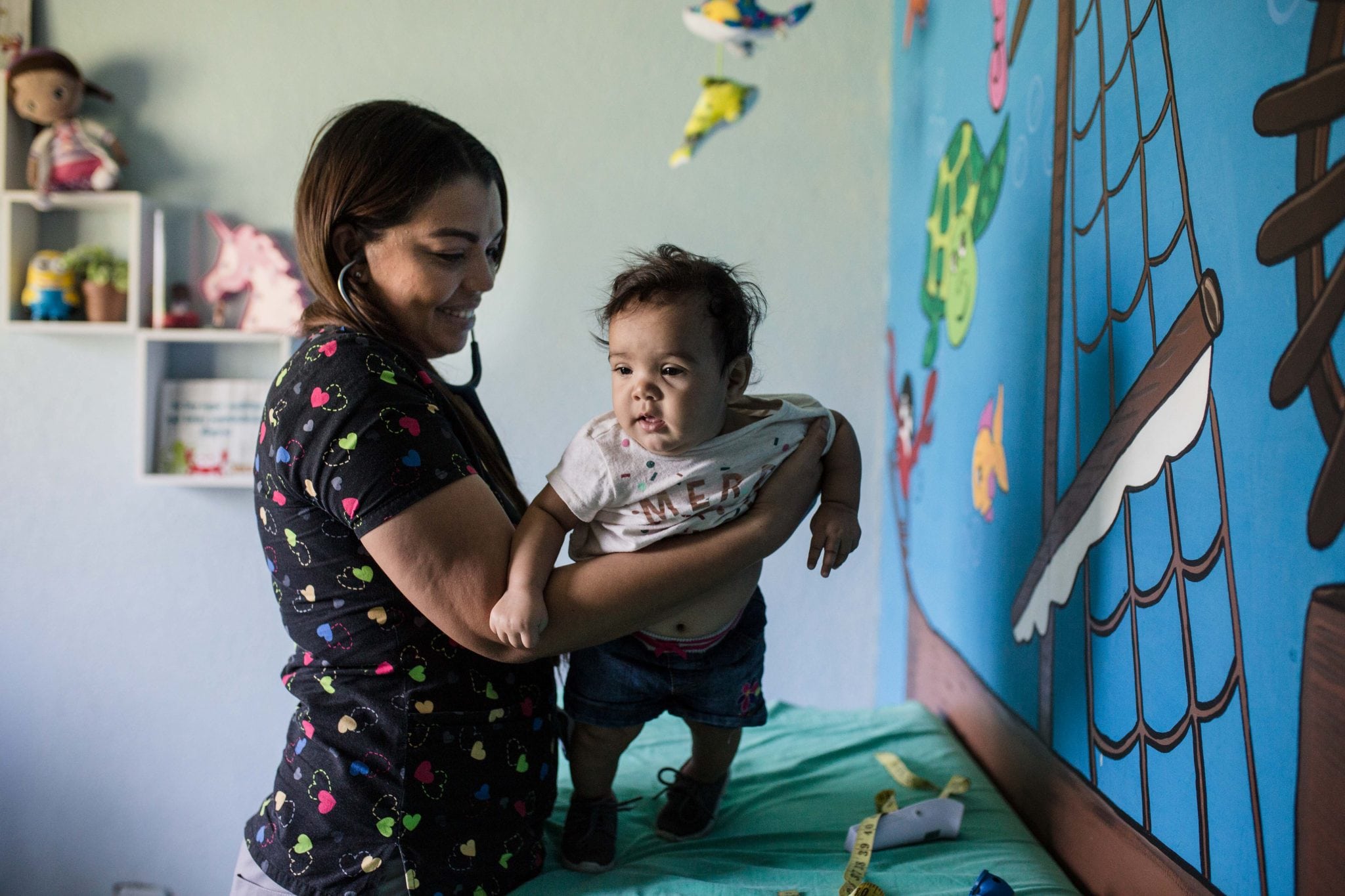
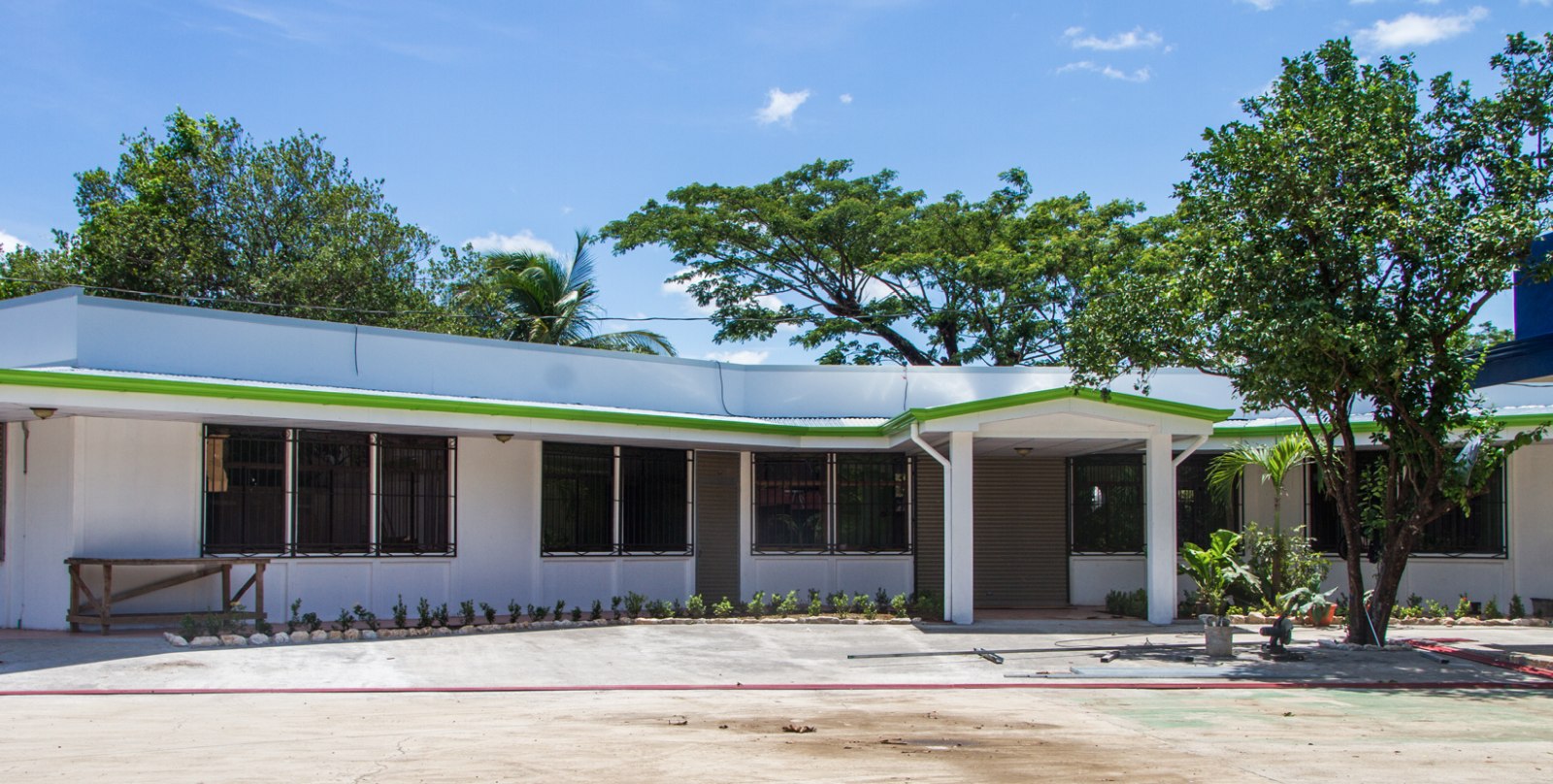

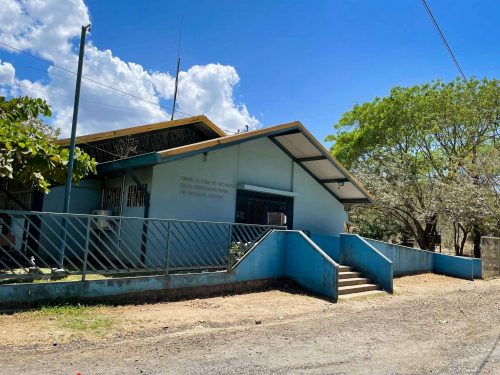

Comments